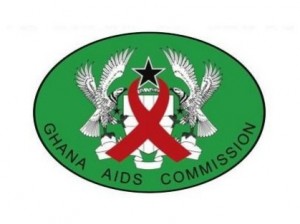Ghana achieves more than 75% PMTCT of HIV in 2011
 Ghana is one of the six countries in sub-Saharan Africa that has achieved high coverage of services to prevent mother-to-child transmission (PMTCT) of HIV in sub-Saharan Africa.
Ghana is one of the six countries in sub-Saharan Africa that has achieved high coverage of services to prevent mother-to-child transmission (PMTCT) of HIV in sub-Saharan Africa.
A Joint United Nations Programme on HIV/AIDS (UNAIDS), World AIDS Day Report 2012 released November 20, 2102 says in 2011, coverage of services to prevent PMTCT of HIV in sub-Saharan Africa reached 59% [53%–66%].
Six countries in the region achieved PMTCT coverage of more than 75%: Botswana, Ghana, Namibia, South Africa, Swaziland and Zambia.
However, the report finds that seven countries reported PMTCT coverage of less than 25%. These are Angola, Chad, Congo, Eritrea, Ethiopia, Nigeria and South Sudan.
The report noted that between 2005 and 2011, the number of people dying from AIDS-related causes in sub-Saharan Africa declined by 32%, from 1.8 million [1.6 million–1.9 million] to 1.2 million [1.1 million–1.3 million], and since 2004, the number of tuberculosis (TB)-related deaths among people living with HIV has fallen by 28% in sub-Saharan Africa.
According to the report, in six countries of sub-Saharan Africa (Burundi, Kenya, Namibia, South Africa, Togo and Zambia), the number of children newly infected with HIV declined by 40%–59% between 2009 and 2011. Fourteen additional countries in the region reported declines of 20-39%.
However, 11 countries in the region saw more modest declines of 1–19%. In four countries (Angola, Congo, Equatorial Guinea, Guinea-Bissau), the number of new HIV infections among children increased, it said.
The report indicated that surveys conducted between 2004 and 2011 in 14 countries in sub-Saharan Africa found significant increases in the percentage of adults who had taken an HIV test in the previous 12 months and received their results.
In Lesotho, for example, an estimated 42% of adult women reported that they had been tested for HIV in 2009 compared to about 6% in 2004. In Rwanda, nearly 39% of adult women were tested for HIV in 2010 compared to about 12% in 2005, it said.
The report shows that unprecedented acceleration in the AIDS response is producing results for people. It also shows that a more than 50% reduction in the rate of new HIV infections has been achieved across 25 low- and middle-income countries––more than half in Africa, the region most affected by HIV, it said.
The report noted that in some of the countries which have the highest HIV prevalence in the world, rates of new HIV infections have been cut dramatically since 2001; by 73% in Malawi, 71% in Botswana, 68% in Namibia, 58% in Zambia, 50% in Zimbabwe and 41% in South Africa and Swaziland.
The report also shows that countries are assuming shared responsibility by increasing domestic investments. More than 81 countries increased domestic investments by 50% between 2001 and 2011. The new results come as the AIDS response is in a 1000 day push to reach the Millennium Development Goals and the 2015 targets of the UN Political Declaration on HIV/AIDS.
By Emmanuel K. Dogbevi
